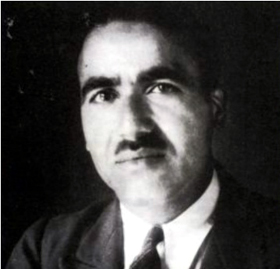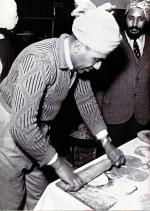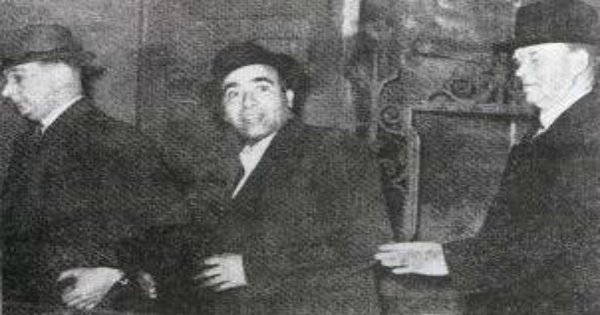Shaheed Udham Singh Biography: Birth, Shaheed, Jallianwala Bagh Massacre, Assassination of O'Dwyer and More About Shaheed-i-Azam
Shaheed Udham Singh Biography: Udham Singh was a Freedom Fighter who belonged to the Gadar Party. He killed Michael O'Dwyer, former lieutenant governor of the Punjab, India in London to avenge the Jallianwala Bagh massacre. He was hanged to death on July 31, 1940, for committing a murder. Read the below article to know more about his birth, early life, the assassination of O'Dyer and more.
It is rightly said, "For every O’Dwyer, there is a Shaheed Udham Singh."
Udham Singh, a Freedom Fighter who belonged to the Gadar Party was hanged to death on July 31, 1940, after he was found guilty of committing murder. Shaheed Udham Singh killed Michael O'Dwyer, former lieutenant governor of Punjab, India in London to avenge the Jallianwala Bagh massacre in Amritsar.
In October 1995, Udham Singh Nagar, a district in Uttarakhand, was named after him by the then Chief Minister of undivided Uttar Pradesh, Mayawati.
Through this article, let us dive deep into the life of Shaheed Udham Singh, the Jallianwala Bagh massacre, the assassination of O'Dwyer, and his ashes at the Jallianwala Bagh.
Udham Singh: Birth and Early Life
(Birth Name : Sher Singh) Udham Singh was born on December 26, 1899, at Sunam, Sangrur district of Punjab, India to Sardar Tehal Singh Jammu and Mata Narain Kaur. His father was a farmer and also worked as the railway crossing watchman in the village of Upali.
After the death of his father, Udham Singh and his elder brother Mukta Singh was raised by Central Khalsa Orphanage Putlighar in Amritsar. In the year 1918, Udham Singh passed his Matriculation Examination and left the orphanage in the year 1919.
Udham Singh: Jallianwala Bagh Massacre
On April 10, 1919, leaders of the Indian National Congress were arrested under the Rowlatt Act. This, in turn, led to a widespread protest at Jallianwala Bagh on April 13, 1919. More than 20,000 unarmed people were a part of the protest. At that time, Udham Singh and his friends from the orphanage were serving water to the protestors. General O'Dwyer along with his troops entered Jallianwala Bagh, blocked the main entrance, and took up the position on a raised bank and without any warning open fired on the crowd for about 10 minutes until the ammunition supply was almost exhausted.
After this incident, Udham Singh was involved in revolutionary politics and was influenced by Freedom Fighter Bhagat Singh. In the year 1924, Udham Singh joined the Ghadar Party to overthrow British Rule in India and organised Indians overseas for the same. In 1927, after receiving orders from Bhagat Singh, Udham Singh received to India, bringing 25 associates and ammunition. However, he was soon arrested over the 25 associates. At the time of his arrest, evolvers, ammunition and copies of a prohibited Ghadar Party paper called "Ghadr-i-Gunj" were confiscated, which led him to five years in prison.
Udham Singh: Assassination of O'Dwyer
In 1931, Udham Singh was released from the prison, but his movements were monitored by the Punjab Police. However, he was able to dodge the Punjab Police and reached Germany via Kashmir. In the year 1935, he reached London and was employed as an engineer. He made plans to kill O'Dwyer, who was responsible for killing hundreds of peaceful protestors at the Jalianwala Bagh.
On March 13, 1940, Michael O'Dwyer was scheduled to speak at a joint meeting of the East India Association and the Central Asian Society (at present, Royal Society for Asian Affairs) at Caxton Hall, London. Udham Singh concealed a revolver in his Jacket's pocket and entered the meeting area. After the meeting concluded, Udham Singh started moving towards the stage and shot O'Dwyer twice, killing him instantly. Apart from O'Dwyer, others injured in the event were-- Louis Dane, Lawrence Dundas, 2nd Marquess of Zetland, and Charles Cochrane-Baillie, 2nd Baron Lamington. Udham Singh was immediately arrested by the officials for killing O'Dwyer.
Udham Singh: Trial and Execution
After almost twenty days of the Assassination of Michael O'Dwyer, on April 1, 1940, Udham Singh faced formal charges and was remanded in custody at Brixton Prison.
As per Udham Singh, after he assassinated O'Dwyer, ' I did it because I had a grudge against him. He deserved it. I don't belong to society or anything else. I don't care. I don't mind dying. What is the use of waiting until you get old? Is Zetland dead? He ought to be. I put two into him? I bought the revolver from a soldier in a public house. My parents died when I was three or four. Only one dead? I thought I could get more.'
While in custody at Brixton, Udham Singh called himself 'Ram Mohammad Singh Azad', with the first three words representing three major religions of Punjab (Hindu, Muslim and Sikh) and the last word representing his anti-colonial sentiment. The word Azad means 'Free'.
In the prison, awaiting his trial, Singh went on a hunger strike which was broken on the 42nd day after he was force-fed by the prison authorities. On June 4, 1940, Singh's trial commenced at the Central Criminal Court, Old Bailey, before Justice Atkinson, with V.K. Krishna Menon and St John Hutchinson representing him. G. B. McClure was the prosecuting barrister. He was inquired about his motivation behind the assassination of O'Dwyer, to which he replied, 'I did it because I had a grudge against him. He deserved it. He was the real culprit. He wanted to crush the spirit of my people, so I have crushed him. For the full 21 years, I have been trying to seek vengeance. I am happy that I have done the job. I am not scared of death. I am dying for my country. I have seen my people starving in India under British rule. I have protested against this, it was my duty. What greater honour could be bestowed on me than death for the sake of my motherland?'
He was convicted of murder and was sentenced to death. On July 31, 1940, he was hanged at Pentonville Prison. On this day every year, i.e., July 31, Singh is paid tribute by various organizations.
Udham Singh: Remains at Jallianwala Bagh
On the request of the then MLA Sadhu Singh Thind, Singh's mortal remains were exhumed and repatriated to India in the year 1974. The casket was received by the then Prime Minister Indira Gandhi, the then President Shankar Dayal Sharma and the 7th President of India, Zail Singh.
Shaheed-i-Azam Udham Singh was cremated at Sunam, Punjab, while his ashes were scattered in the Sutlej river. Some of his ashes were retained and are kept inside a sealed urn at Jallianwala Bagh.
Udham Singh: Legacy
1- A charity is dedicated to Udham Singh and it operates on Soho Road, Birmingham.
2- A museum has also been dedicated to him which is located near Jallianwala Bagh, in Amritsar.
3- Singh's weapons, his knife, diary, and a bullet from the shooting are kept in his honour in the Black Museum of Scotland Yard.
4- A number of films have been picturised on him-- Jallian Wala Bagh (1977), Shaheed Uddham Singh (1977), and Shaheed Uddham Singh (2000).
5- Udham Singh Nagar district in Uttarakhand is named after Udham Singh, on the orders of the then Chief Minister of undivided Uttar Pradesh.
6- Singh is the subject of the 1998 track "Assassin" by the Asian Dub Foundation.
7- A chowk has been named after him in Anupgarh, Rajasthan-- Shaheed Udham Singh Chowk.
8- The day of his execution is a public holiday in Punjab and Haryana.
9- Singh is the subject of the 2015 music video and tracks "Frank Brazil" by The Ska Vengers.
10- On March 13, 2018, a 10 ft tall statue of Udham Singh was installed by International Sarv Kamboj Samaj at the main entrance of Jallianwala Bagh, Amritsar. The statue was unveiled by the then Union Home Minister Rajnath Singh.









